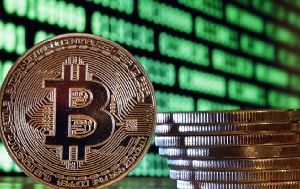 Blockchain was introduced to run the peer-to-peer digital cash
Blockchain was introduced to run the peer-to-peer digital cash
Blockchain is a good example of distributed technology in action.
Invented in 2008 to run the peer-to-peer digital cash, Bitcoin, this technology has evolved to power other applications for things such as copyright protection, tracking of ownership, voting, digital assets management, among others.
Blockchains are essentially a digital ledger which chronicles transactions and makes them publicly available.
How does it work
In the parlance of cryptocurrency, a block records a new set of transactions.
Once this transaction is completed as a block, it is added to the chain, resulting in a chain of blocks; blockchains.
Since elements of blockchain are encrypted (the data they contain is coded and unreadable, thereby preventing unauthorised access), processing these transactions involve the solving of complicated mathematical problems which become more difficult as the blockchain builds up.
“Mining” is the process of solving these equations and the miners are rewarded with bitcoins.
In terms of our paper currencies, a government issues such currencies and distributes them through a central bank.
However, with bitcoin, there is no central government.This does not only provide an effective way to issue bitcoins but also guarantees and motivates more miners to solve these equations which are integral to bitcoin protocol.
This guarantees that the bitcoin network is not only secure but safe and stable.
“Bitcoin mining is the process of adding transaction records to Bitcoin's public ledger of past transactions or blockchains.
This ledger of past transactions is called the blockchain as it is a chain of blocks.
The block chain serves to confirm transactions to the rest of the network as having taken place.”
In a sense, blockchain is a public ledger which manages Bitcoin or other cryptocurrency records.
Blockchain can be equated to the Internet, in the sense that, the Internet is making a lot of information and knowledge resources available without any “central control”.
Similarly, blockchain provides the mechanism of a distribution valve online, bypassing traditional financial intermediaries such as banks or governments.
The blockchain system is unique in a lot of ways, especially because it does not run on a single server but rather, it is premised on collaborative distributed processing nodes.
The magic of the bitcoin is its enabling free exchange without a middleman.
Applications of blockchains
The most popular application of blockchain is Bitcoin, which is an online equivalent of cash.
In terms of paper currency and coins, there are physical and security features which can help in authentication, but there is no central ledger which documents in real time, the amount of cash in circulation; which means forgeries of both notes and coins are possible.
With bitcoins, there is a ledger of all transactions providing a system for authentication.
Uniquely and unlike paper currencies which are issued by central banks, bitcoins are not issued by any central authority but by a “collaborative” system.
Beyond the primary use of blockchain to run the Bitcoin currency system, blockchain, distributed ledger technologies have the potential to help governments to track taxes, manage the births and deaths register, run national health insurance services, issue passports and support land administration.
With more and more personal information of individuals now available in digital forms, blockchain can help in ensuring the integrity of this data online.
In the area of education, blockchain technology can help support issuance of certificates, including course credits management and verification of certificates issued by educational institutions without having to directly contact them.
Blockchain and Ghana Taking a cue from the United Kingdom Government which issued a report entitled “ Distributed ledger technology: Beyond block chain”
The government of Ghana can take steps to provide a written strategy to guide blockchain applications in the country.
The blockchain train has left the station, it is imperative for us now to have a deep understanding of its risks, challenges and opportunities in order for individuals, organisations and governments to map out astute policy, strategy and mechanisms to make realistic choices in its application.
In conclusion, there is no doubt that blockchain is a disruptive technology with huge potential.
In the near future, if its potential becomes fully realised, it may support efficiency in numerous transactions plus possibly, reinvent the bedrock of our economy.